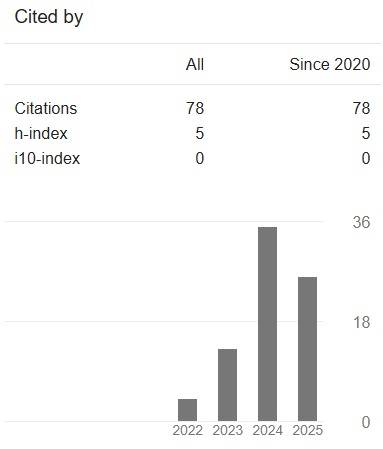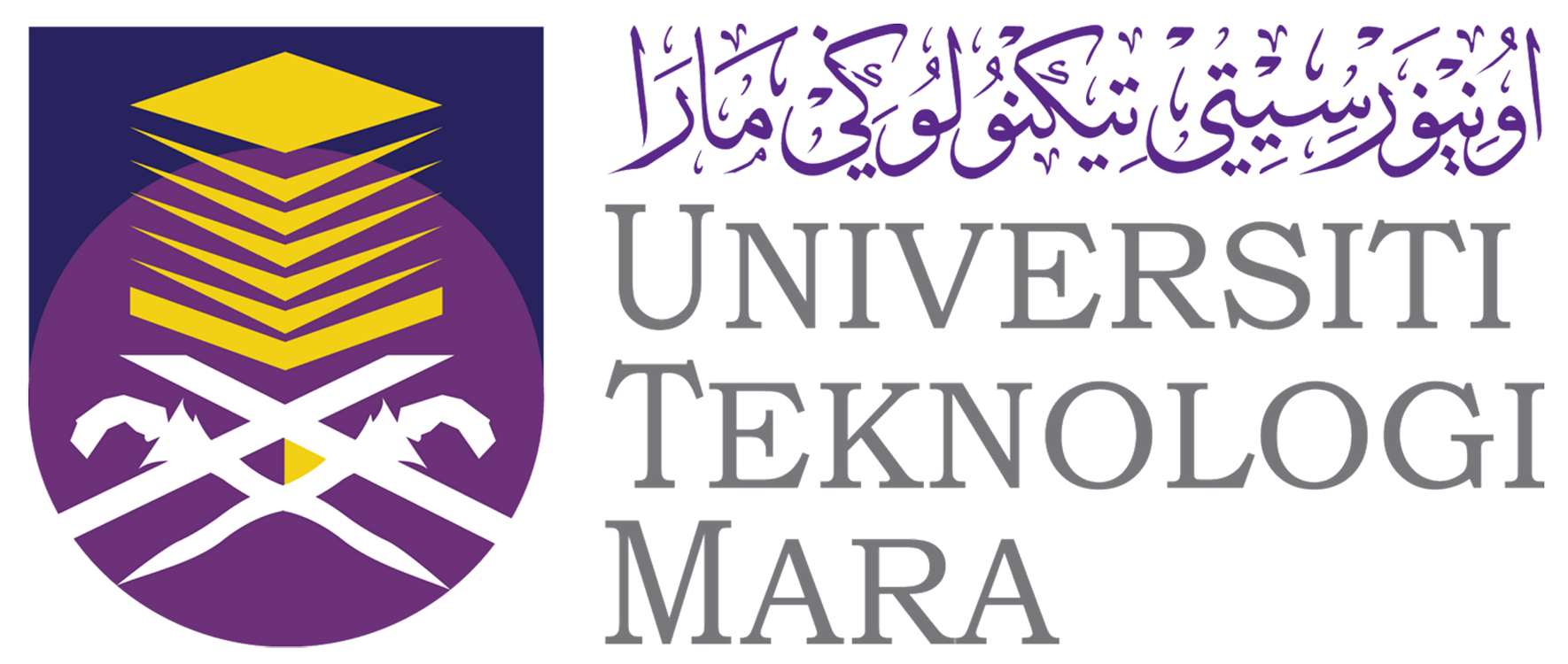Analytical Prediction of Fatigue Resistance of Additively Manufactured Aluminium Alloy Based on Murakami Method
DOI:
https://doi.org/10.24191/jaeds.v3i2.66Keywords:
Murakami, Fatigue Strength, Stress Intensity Factor, ImageJAbstract
This research is devoted to analyze the stress state and fatigue strength on two different specimens made of aluminium alloy which was generated by using wire arc additive manufacturing (WAAM). The relationship between fatigue strength and flaw size was calculated based on the root squared area – a parameter by conventional Murakami’s equation which is a widely used analytical approach for predicting fatigue resistance in metallic materials. The research starts with the metallographic preparation process on two test series followed by Vickers hardness measurement. Further, the image of observed pores was to be processed and dimensioned using open-sourced software ImageJ by considering pixels and actual distance as well as by defining image threshold value for measuring pore sizes. The analytical approach is conducted in order to describe the maximum stress intensity factor Kmax at the crack front and to assess the fatigue strength σFS. As final results, specimen A has average pore area of ≈65 µm with Kmax of 333.75 MPa∙√m and σFS of 137 MPa, while specimen B has average pore area of ≈42 µm with Kmax of 325.13 MPa∙√m and σFS of 153 MPa. Overall, this research allows the formulation of a method for estimating fatigue strength of large defects leading to a conclusion that flaws can influence the fatigue resistance of the material so that the bigger the flaw size is, the lower σFS and the higher Kmax.
Downloads
References
Y. Murakami, “Inclusion Rating by Statistics of Extreme Values and Its Application to Fatigue Strength Prediction and Quality Control of Materials.”, Journal of Research of the National Institute of Standards and Technology, vol. 99, no. 4, July – August 1994.
M. Jimenez-Martinez, “Manufacturing effects on fatigue strength,” Engineering Failure Analysis, vol. 108, Jan. 2020, doi: 10.1016/j.engfailanal.2019.104339.
J. C. Pang, S. X. Li, Z. G. Wang, and Z. F. Zhang, “General relation between tensile strength and fatigue strength of metallic materials,” Materials Science and Engineering: A, vol. 564, pp. 331–341, Mar. 2013, doi: 10.1016/j.msea.2012.11.103.
N. Sanaei and A. Fatemi, “Defects in additive manufactured metals and their effect on fatigue performance: A state-of-the-art review,” Progress in Materials Science, vol. 117. Elsevier Ltd, Apr. 01, 2021. doi: 10.1016/j.pmatsci.2020.100724.
L. Bercelli, S. Moyne, M. Dhondt, C. Doudard, S. Calloch, and J. Beaudet, “A probabilistic approach for high cycle fatigue of Wire and Arc Additive Manufactured parts taking into account process-induced pores,” Additive Manufacturing, vol. 42, Jun. 2021, doi: 10.1016/j.addma.2021.101989.
J. Lee, S. Y. Park, and B. H. Choi, “Evaluation of fatigue characteristics of aluminum alloys and mechanical components using extreme value statistics and C-specimens,” Metals (Basel), vol. 11, no. 12, Dec. 2021, doi: 10.3390/met11121915.
T. Hauser et al., “Porosity in wire arc additive manufacturing of aluminium alloys,” Additive Manufacturing, vol. 41, May 2021, doi: 10.1016/j.addma.2021.101993.
S. Beretta and Y. Murakami, “Statistical analysis of defects for fatigue strength prediction and quality control of materials,” Fatigue & Fracture of Engineering Materials & Structures vol. 21, no. 9, pp. 1049–1065, 1998, doi: 10.1046/j.1460-2695.1998.00104.x.
C. Xie et al., “Defect-correlated fatigue resistance of additively manufactured Al-Mg4.5Mn alloy with in situ micro-rolling,” Journal of Materials Processing Technology, vol. 291, May 2021, doi: 10.1016/j.jmatprotec.2020.117039.
Y. Murakami, H. Masuo, Y. Tanaka, and M. Nakatani, “Defect Analysis for Additively Manufactured Materials in Fatigue from the Viewpoint of Quality Control and Statistics of Extremes,” in Procedia Structural Integrity, Elsevier B.V., 2019, pp. 113–122. doi: 10.1016/j.prostr.2019.12.014.
R. K. Rhein, Q. Shi, S. Arjun Tekalur, J. Wayne Jones, and J. W. Carroll, “Effect of direct metal laser sintering build parameters on defects and ultrasonic fatigue performance of additively manufactured AlSi10Mg,” Fatigue & Fracture of Engineering Materials & Structures, vol. 44, no. 2, pp. 295–305, Feb. 2021, doi: 10.1111/ffe.13355.
Y. Murakami, “Material defects as the basis of fatigue design,” in International Journal of Fatigue, Aug. 2012, pp. 2–10. doi: 10.1016/j.ijfatigue.2011.12.001.
P. Sharma, S. Sharma, and D. Khanduja, “A study on microstructure of aluminium matrix composites,” Journal of Asian Ceramic Societies, vol. 3, no. 3, pp. 240–244, Sep. 2015, doi: 10.1016/j.jascer.2015.04.001.
Y. Murakami and M. Endo, “Effects of defects, inclusions and inhomogeneities on fatigue strength,” International Journal of Fatigue, Volume 16, Issue 3, Pages 163-182, April 1994.
Y.Murakami and S.Beretta, “Small Defects and Inhomogeneities in Fatigue Strength: Experiments, Models and Statistical Implications”. Extremes 2, 123–147,1999, https://doi.org/10.1023/A:1009976418553
Y. Murakami, S. Kodama, and S. Konuma, “Quantitative evaluation of effects of non-metallic inclusions on fatigue strength of high strength steels. I: Basic fatigue mechanism and evaluation of correlation between the fatigue fracture stress and the size and location of non-metallic inclusions,” International Journal of Fatigue, Volume 11, Issue 5, pp. 291-298, September 1998.
A. Casagrande, G. P. Cammarota, and L. Micele, “Relationship between fatigue limit and Vickers hardness in steels,” Materials Science and Engineering A, vol. 528, no. 9, pp. 3468–3473, Apr. 2011, doi: 10.1016/j.msea.2011.01.040.
Downloads
Published
How to Cite
Issue
Section
License
Copyright (c) 2023 Nik Nur Khaleeda Nik Nor Zainal Abidin, Matthias Oberreiter, Michael Stoschka, Yupiter HP Manurung, Mohd Shahriman Adenan, Renga Rao Krishnamoorthy

This work is licensed under a Creative Commons Attribution 4.0 International License.









